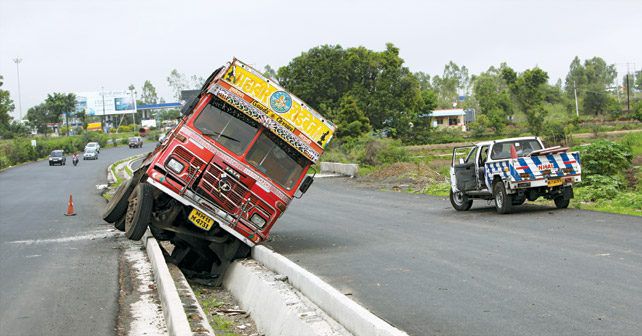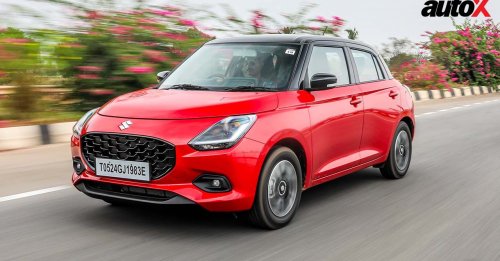Roads in India claim an average of 400 lives a day, and nearly every measure to bring that number down has been stuck in the gridlocked world of our bureaucracy. Rahul takes a look at the situation to find out if there’s any light at the end of the tunnel.
In the year 2015, 139,671 lives were reportedly lost in road accidents in India. This translates to 400 lives a day or 17 deaths every 60 minutes. And that equates to one life lost every three minutes. Just let that sink in for a moment.
The comparison between lives taken in the battlefield to the death toll on Indian roads have been made on numerous occasions. But, with every passing year, the death toll on Indian roads has been increasing at a steady pace.
The data released by the Transport Research wing of the Ministry of Road Transport and Highways in 2015 claims that 77% of all accidents are caused due to driver error – under which ‘speeding’ has been the cause of 64,633 deaths, while ‘driving under the influence’ has been responsible for 6,755 deaths. Over 25,000 deaths were caused by overloaded vehicles, and over 57,000 hit-and-run cases were reported in 2015.
However, these really are just the thin crust that shells the larger core of the issue that we face. The fact of the matter is that these are symptoms of a larger problem – that of traffic violations going unpunished and bad road design and construction. On top of that, no proper driver training has been standardised by the government. In a country that is home to roads that devour human lives, you’d expect driving tests to be thorough and rigorous – but that’s not the case. On the other hand, driving licenses are handed over to people like candy thrown to a group of hungry children.
All of that results in a recipe for utter chaos and disaster, and that’s why it’s not at all surprising that the aftertaste is this bitter. But when the current government took over, they announced that they would make amendments to the Motor Vehicles Act – which has remained untouched since 1989. It was the first sign of hope that someone has finally risen to the challenge, and some much-needed change was on its way. But the bill was summoned to the notorious world of bureaucracy and numerous drafts were made, again-and-again – which, of course, is essential to proper and correct governance, but it consumes valuable time in the process.
The bill was also met with protests from the transport workers and the union, because the bill mandated obtaining fitness certificates even for light motor vehicles and stringent penalties for driving offences. Additionally, the union also demanded strict enforcement of labour laws, universal social security cover, and hiking of minimum wages. That is understandable, because commercial vehicles like trucks, busses and taxis comprise of a large percentage of the vehicles that are involved in accidents and fatalities. Most of these drivers are driving long distances with tight deadlines, which leads to being on the road for over 10-12 hours at a stretch. In some countries that would be illegal.
In August 2016, the amendment to the act was finally approved by the cabinet, which included numerous changes to the former act. The majority of the act was increasing fines for traffic violations, which is a no-brainer – but enabling online Learners licenses and increasing the validity period for driving licenses does seem counterproductive in the present situation. The amendment has also made some basic safety features in cars and air-conditioned cabins in trucks mandatory.
Many car and bike manufacturers have campaigns in India that promote road safety. Maruti Suzuki have done whatever they can though their Maruti Driving Schools (MDS) and the Institutes of Driving & Traffic Research (IDTR). My recent visit to the IDTR in Bahadurgarh, Haryana, shed some light on what exactly they’re trying to achieve through these initiatives. While their neighbourhood driving schools are set up in partnership with their dealers, the IDTRs are joint ventures between the manufacturer and the Department of Transport of State Governments. The IDTRs offers driving training programs for different segments of drivers, as per the mandate of the respective State Governments. Training is offered to fresh license seekers, those seeking renewal of their licenses, and those seeking a simple refresher course.
At the IDTR in Bahadurgarh, students have to go through a number of hours of theoretical classes, followed by a mandated amount of time on their digital simulator for drivers to get used to the controls, before they finally hit the test track. What’s clever about this track in particular is that to assess the individual’s driving, camera based image processing technology is used. The system transmits real-time information and performance to the control centre, as well as to a tablet connected via Wi-Fi to the driver trainer onboard for quick assessment and understanding. Additionally, the trained and certified driving instructor who’s inside the car inputs the number of assists he’s made as well. The system uses all of this data cumulatively, and provides a score to the student in real time. The technology is brilliant, however, the simulator itself adds little value – as there are video games with better graphics that offer better feedback. But the camera-based image processing technology is something that can be useful, but it needs to be more widespread and prevalent around the country.
The issue with drivers in India is that everyone seems to drive with their ego on their sleeves, and traffic laws only apply when we suspect we’re being observed by the authorities. Somehow, we’ve gotten it into our heads that driving is some sort of superpower and we each believe that we’re better at it than the next person. And because of that belief, some of us think that accidents won’t happen to us, so safety features are unimportant. But, lately, buyers are opting for cars equipped with safety features – and they’re willing to pay the premium.
Airbags come later though – the first step is awareness and driver training. This needs to include everything from something as small as the correct driving position to spatial awareness, and also high-speed driver training – followed by a medical test that would include eye tests and reaction times. The test should conclude with a heavily scrutinised driving test before handing out these plastic cards, which, in the wrong hands, is not a license to drive, but a license to kill.
The government has set a target of reducing the number of deaths on Indian roads to half by 2020, but drastic measures need to be taken for this to be achieved. Sure, there’s light at the end of the tunnel but there’s still some uncertainty regarding the length of the tunnel itself.





























Write your Comment